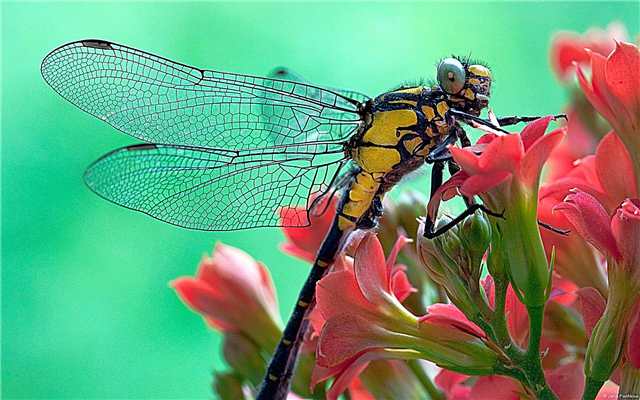Among all mammals, it is the rodent family that occupies the leading places in terms of numbers. Rodents can be beneficial and harmful to humans. Some species are capable of carrying deadly diseases or destroying crops. Next, we suggest reading more interesting and exciting facts about rodents.

1. Gerbils can perceive human speech.
2. Deep lacerations can cause hamsters with sharp incisors.
3. Human laughter resembles the sounds that mice make during games.
4. Hamsters are not afraid of heights.
5. Not more than four years is the average life span of a hamster.
6. Shaggy hamsters live in the forests of East Africa.
7. Shaggy hamsters look like porcupines.
8. Ultrasonic repelling is ineffective for rats.
9. The guinea pig, which lives in America, is the largest rodent in the world.
10. A small dwarf hamster lives in Mexico.
11. Small mammals are very dangerous.
12. Black rats are potential killers.
13. You can get the plague through a rat bite.
14. Rats are prone to alcoholism.
15. The rat is considered a by-product of civilization.
16. Small rodents are believed to be of great benefit in the future.
17. In recent years, the block system has been used to kill rats.
18. Rats living in the city become cunning and big over the years.
19. For many centuries, it is rats that have lived next to people.
20. Some rodents can move their bodies through the tiny hole quite easily.
21. Only for a short time does rat poison affect rodents.
22. In the modern world, cats live in peace with rats.
23. There are about 100,000 olfactory receptors in the nose of rats.
24. Poisonous scorpions can be hunted by some species of American hamsters.
25. The cellular structure of hamsters is able to actively block poison.
26. A hamster that lives in Mexico is considered a night predator.
27. An American hamster hunts for kites, grasshoppers and scorpions.
28. Needle mice are capable of tissue regeneration.
29. African mice can shed their skin in case of danger.
30. On an Indonesian island, a rodent species was found that does not know how to gnaw.
31. Indonesian rodents eat only earthworms.
32. Rodents are considered to be a large population among mammals.
33. No rodent lives in Antarctica.
34. The largest rodent lived in South America about 4 million years ago.
35. Capybara is the largest rodent in the modern world.
36. The smallest rodent in the world lives in Central America.
37. The smallest rodent in the world has eight centimeters.
38. The most expensive rodent in the world is the chinchilla.
39. An adult male chinchilla weighs half a kilogram.
40. The Malay porcupine has lived for over 27 years.
41. Rodents can give birth to about 20 cubs in human homes.
42. The mutant rodent was bred in Japan.
43. Rodents grow teeth throughout their lives.
44. A hamster's bite can be scarier compared to a large animal.
45. The largest rats in the world live in the Philippines.
46. The length of rats can reach more than 80 cm.
47. The ermine and the weasel are one and the same animal.
48. The pulse rate of a shrew can reach up to 1300 beats per minute during waves.
49. Kangaroos the size of mice live in Australia.
50. Rats can breathe under water for two minutes.
51. A rat will not receive any damage if it falls from a five-story building.
52. The stony squirrel lives in the North American desert.
53. A stony squirrel may not drink for a hundred days.
54. In a year, rats can give birth to 15,000 cubs.
55. The front teeth of rodents are thin and long.
56. A hare can reach speeds of up to 72 km per hour.
57. It is the rodents that are considered intelligent and intelligent animals.
58. Any rodents can easily adapt to new circumstances.
59. Rodents are not careful about changes in the territory of their stay.
60. Rats are perfectly oriented in the surrounding space.
61. More than 30 rats are born every minute in the world.
62. A female rat can give birth to more than six cubs at a time.
63. The word “mouse” comes from the word “musha”.
64. Rats are considered omnivores.
65. A rabbit develops speed up to 56 km per hour.
66. Several thousand caches in one season can prepare ordinary squirrels.
67. American red squirrels feed on seeds of cones of coniferous trees.
68. Mushrooms can harvest common proteins for the winter.
69. Gray squirrels have developed their food storage skills very well.
70. About two hundred thousand ago the first representatives of rodents appeared in the world.
71. More than 48 years ago, rats already existed.
72. The number of people in big cities is equal to the number of rats.
73. In large cities, the structure of rats becomes human-like.
74. Rats can stay in water for up to three days.
75. Rats can swim more than 30 km.
76. In an aggressive state, a rat can attack a person.
77. More than 500 beats per minute can be the heart rate in rodents.
78. Fine hairs of rats are used in ophthalmology.
79. Rats can cover more than 50 km per day.
80. Rodents can gnaw a hole in the wall.
81. Most rodents communicate with each other using sounds.
82. Rodents can sense X-rays.
83. One rat can eat up to 12 kg of food per year.
84. Some rodents can live without water for a long time.
85. Some rodents can laugh like humans.
86. One rat colony can reach 2000 individuals.
87. Wild rats need animal protein to survive.
88. Some species of rodents can withstand pressure on teeth up to 500 kg.
89. A blindfolded rat can easily find his way in the maze.
90. Fried rat is considered one of the most delicious dishes in Asia and Africa.
91. Gambian marsupial rats are used to detect mines.
92. Even in the most difficult conditions, some species of rodents are able to survive.
93. Modern rats can carry over 20 infectious diseases.
94. The sound of a fan is annoying for some rodent species.
95. A female can give birth to over a hundred rats in a year.
96. Some rodents have a feeling of fullness and never overeat.
97. Some rodents use their tail as a rudder.
98. Most rodents can eat both plant and animal food.
99. Rodents live in all countries of the world except Antarctica.
100. Rats are considered the most common rodent in the world.









